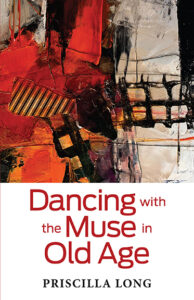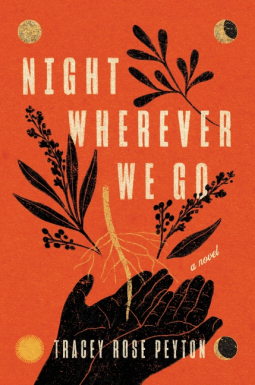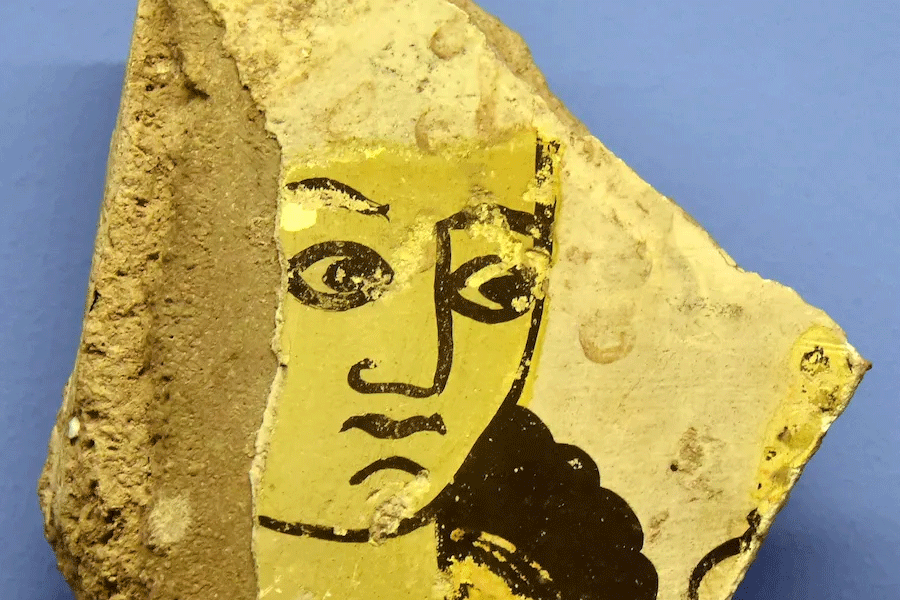The Work We Can Do Only As We Age: A Conversation with Priscilla Long
I met Priscilla Long sixteen years ago in Seattle when the material she developed for her craft book, The Writer’s Portable Mentor was being taught out of thick binders her students snapped dozens of master essays into. Along with a dozen other writers, we sat around a long table for eight sessions each winter and learned sentence strategies, discipline, grammar, structure, observation and more. I was forty-seven and just beginning to imagine the possibility that I could write. Like me, Long had been a late bloomer, publishing her first book at forty-five. When I met her in her sixties, she was as energetic and oriented to learning as a youngster.
And, as someone who has struggled with chronic illness and rare disease in my own body and has a partner who is disabled through brain injury, as well as many in my literary community who are disabled, Long’s work’s beats the drum for disabled people being creators rather than just audiences for arts institutions.
I caught up with Long again by email letters after the publication of her recent publication of Dancing with the Muse in Old Age, one of the most striking and fact-based takedowns of toxic ageism I’d ever read. Long is masterful in building the conviction for another possibility for living other than surrender to the long decline. When I immersed myself in her stories, strategies, and writing prompts on aging, I noticed my outlook on my career began to shift to imagine a half dozen new works. In Long, I see someone like David Bowie was referring to when he said, “Aging is an extraordinary process where you become the person you always should have been.”
***
The Rumpus: One of the surprising parts of your research for me was how ageism hurts the young. You write: “Self-inflicted ageism is an important part of decline.” Can you say more about this?
Priscilla Long: We now know that ageism (against the old) hurts not only the old but also the young. This is based on psychologist Becca Levy’s longitudinal studies at the Yale School of Public Health. She found that twenty-year-olds (or thirty-year-olds, or forty-year-olds) who have negative attitudes toward old people and toward their own aging have seven years less to live, with a significantly greater probability of stroke, cardiac issues and dementia! We live in such an ageist society that most of us have some self-inflicted ageism, but knowing its rather dreadful consequences should wake us up to rethinking our own aging.
Now, why should our own internalized ageism spur decline? My guess is that if you believe that that aging equals decline, you will be less likely to move your body (the statistics on how few persons meet federal guidelines for exercise—which is, more or less, walking a half hour a day and doing strength training twice a week—is pretty shocking); you will be less likely to undertake rigorous new learning; you will be less likely to begin or continue writing those poems or painting those paintings; you will stop dancing, figuring you are too old. You will stop training for that half-marathon. You will be less likely to be pro-active in connecting with other people, forming new friendships. In other words, if you feel that aging is about decline, you may well decline approaches and strategies that we now know are essential for a vibrant, creative, productive, and engaged old age.
Rumpus: Dancing with the Muse in Old Age carries a Priscilla Long signature, which is a deeply researched work with case studies used in a deliberative way. It seems you saturate us with models and statistics, which has the effect of taking confining habits of mind around aging and shoving them off the table. I’m wondering how you approached the use of research in this work?
Long: I approach research dutifully and compulsively. The book is an easy read, and entertaining and encouraging, or so I hope, but the science and statistics in it are meticulously cited, for I did not make this stuff up.
For example, we’ve known for quite a while that the brain is plastic, that the hippocampus—that brain organ crucial for learning and memory—can produce new stem cells in old age. But I was most amazed to encounter the work of neuroscientist Rachel Wu and her team: It’s not about cognitive maintenance, it’s about cognitive development! (Doing crosswords is fine if you love doing crosswords. It’s just not enough.) As we approach old age, time tends to get more freed up. We need to use some of this time to engage in rigorous new learning rather than resting on our laurels and relying on our (at this point, vast) experience. Because—the downside of the brain’s plasticity is that if you aren’t actively learning, our brain’s millions of connections begin to dissipate, the brain shrinks, the hippocampus gets smaller. That’s the science.
Also, it was a revelation to discover that common opinions about the growing population of elders—such as the notion that we are going to bring down the economy (the “gray tsunami”)—are patently false. We are holding up the economy! Most transfers of funds (around the world) go from older to younger. The old have huge economic clout, purchasing, for example, one-fourth of all toys. Philanthropy depends on elders. Also, when elders do better, younger people do better. (Most grandparents, for example, are deeply attached to their grandchildren and help them out in various ways.)
Rumpus: The case studies on aging were really effective. It feels like many of the conventional cultural opinions around aging are confining, and wrong, and the stories of people aging with artistry, productivity, resources, intelligence, discipline—they permeate this book. Two of my favorite examples are President Jimmy Carter and Twyla Tharp, and I wonder if you can speak about what moved you about the lives you learned about and their thoughts and practices on aging?
Long: I consider the one hundred or so aged creators (and other active elders) that I put in my book to be my mentors. I want to be like painter Wayne Thiebaud when I grow up, who started a new body of work (the clowns) at age ninety-eight. I want to be like Faith Ringgold, painter and fabric artist who in her early nineties recently created a New Yorker cover. I want to be like Sarah Yerkes, who published her first book of poems after the age of one hundred. The dancer Twyla Tharp is my hero, absolutely. So is Jimmy Carter, who built furniture, wrote, and painted, as well as doing his better-known peacemaking work. And even though I’m not at all athletic, I can use Don Pellman as a model (he broke world records in sprinting and disc throwing after age one hundred). Why? Because when he reached the age of one hundred, he did not say, okay, well, now I am one hundred, so I can’t run any more. He trained. He followed his dreams. And he achieved some of his goals. I am now eighty years old. My dream is to write ten more books.
It is important to note that a number of these world-class creators are or were disabled. We probably know about the painter Matisse, who began his famous cut-out series from a wheelchair. Alma Thomas, the Washington DC painter (she died in 1978) has had two big retrospective exhibitions in the past couple of years. She was trained in art and then taught art to children for several decades. When she turned back to her own work in her seventies she was severely afflicted with arthritis. She found ways around it and her brilliantly colored abstractions became internationally known.
Also, many of these creators started quite late in life.
Rumpus: At the end of every chapter, you have developed some writing prompts that allow people to delve into how they approach their views of old age. I found this instructive, and especially the question about what I might be willing to learn as I age. You have me thinking about the things I think I’m too old to learn, as well as the things I’m willing to improve by five percent (in my case, my friendships and social life.) Where did this five percent come from, and how is it changing you?
Long: I got the five percent idea from a self-help book that helped me a lot years ago (Nathaniel Branden’s Six Pillars of Self-Esteem) and because I agree that crash diets don’t work. We cannot control our fate, as we know, but we can influence our fate toward flourishing well-being. The questions at the end of each chapter help us to evaluate where we are now (to progress from here to there it’s essential to know where here is) and they help us to set goals. The five percent recognizes that slow but steady wins the race.
The writing prompts have helped me. For example, although, as I’ve said, I’m not in the least bit athletic, the evidence for how much exercise helps us is so overwhelming that I now have bonded to my Fitbit and get my ten-thousand steps per day, as well as lifting weights a couple or three times a week. You set a goal and then do a little at a time until you reach your goal.
Among the questions I reflected on in my own notebook were those about learning. I research and write on widely divergent topics (two recent examples are “Salmon in the Pacific Northwest” and “On Writing,” about the origin of writing). The topics are quite different but the process of researching and writing is much the same. I continue to research and write, but I also decided to take up my nemesis—math—and I’m learning to play banjo.
Rumpus: My maternal grandmother lived until ninety-two, likely due to quitting smoking in her early adulthood, and being a lifelong golfer, well into her eighties. But she disliked that I lifted weights and considered it unladylike. I wonder what you think might happen with aging and ageism when there isn’t such a gendered approach to what we do with our lives?
Long: Each person is who they are. No one needs the culture or any of its representatives to tell them, “This is unladylike” or “Be a man.” In life and in creative pursuits we don’t need a box to contort ourselves into, especially not a box we did not ourselves choose.
Rumpus: Exactly! As a late starter myself—I didn’t publish anything until I was forty-eight, and my first book was at fifty-five—I’m intrigued that you published The Writer’s Portable Mentor at sixty-seven. It’s a culmination of twenty years of teaching, and decades of writing. Many of us have benefited from your craft exercises and approaches to cultivating discipline here. I wonder if you can speak about the work that you can do as an artist only as you age?
Long: For those who persist, there are so many advantages to being an older creator. Experience is an invaluable asset. Every piece or book or poem is new, but one has learned how to work, how to proceed, how to get through being stuck, how to finish, how to revise, how to get that work out into the world.
I published my first book, Where the Sun Never Shines: A History of America’s Bloody Coal Industry, in 1989 when I was forty-five years old. I’d worked on it nights and weekends for twenty years. Partly, it represents a vast amount of research (much of it done while I was working fulltime as a printer), but also it took me a long time to have the faintest idea how to go about structuring and writing a book.
That long experience also went into The Writer’s Portable Mentor, which I published more than twenty years later. I could not have published it before I did because it took me that long to study all the craft moves and teach all the craft moves and use the craft moves in my own writing and study them some more and teach them some more. Meanwhile I wrote and published dozens of shorter pieces in various literary and other magazines and online venues. And while doing all this writing (along with poetry) I studied the sentence, I studied metaphor, I studied deep structure, and so on. So yes, it took a long time, much longer than it took to get an MFA—an enlightening experience (1988-1990) done in my mid-forties as my book on the history of coal mining was coming out. I learned a lot there, but there was a lot to learn beyond the MFA.
Rumpus: I was fascinated too by something you call meta-skills, which have to do with attitudes and ways of working. What was something that you can do in old age that your younger self wouldn’t have been able to do in this area of meta-skills?
Long: A meta-skill is knowing how to work, no matter what you take up. For me, and for many elders, there is the release from that overwhelming desire to please. Art does not want you to write what you think somebody else wants to hear. Older people tend to be emotionally more steady, and that is a great help with working on any art. I have learned to keep on producing even as the world goes to hell. In earlier years, as a participant in peace activism and work for social justice, I could be easily derailed from my writing by world or local events. You learn how to proceed through rocky places—through being stuck. I have learned how to finish. I now work along on my writing pretty much without anxiety. This is the way to go!
Rumpus: Do you have a vision for the elder you wish to become next?
Long: I dream of writing ten more books. (Dancing with the Muse in Old Age is my seventh book.) This is not without challenges. One of them is how not to start repeating oneself. How to engage in new learning. Also, I feel that productivity is important. This does not mean working anxiously or fast. But steady production of poems, and pieces, and books is what I ask myself to do. As for mentoring and teaching, I will continue, absolutely. But the foundation for teaching and mentoring is to model being a writer.
Finally, one may become disabled in older age (or perhaps not), and of course disabled persons are aging like everyone else. It is most important to me that a significant number of the world-class creators used as models in Dancing with the Muse in Old Age are disabled. Sometimes a visual artist will change the medium they are working in, but they keep on. My dream for my own life is to keep on creating to the end.
***
Author photo by Anne Herman




